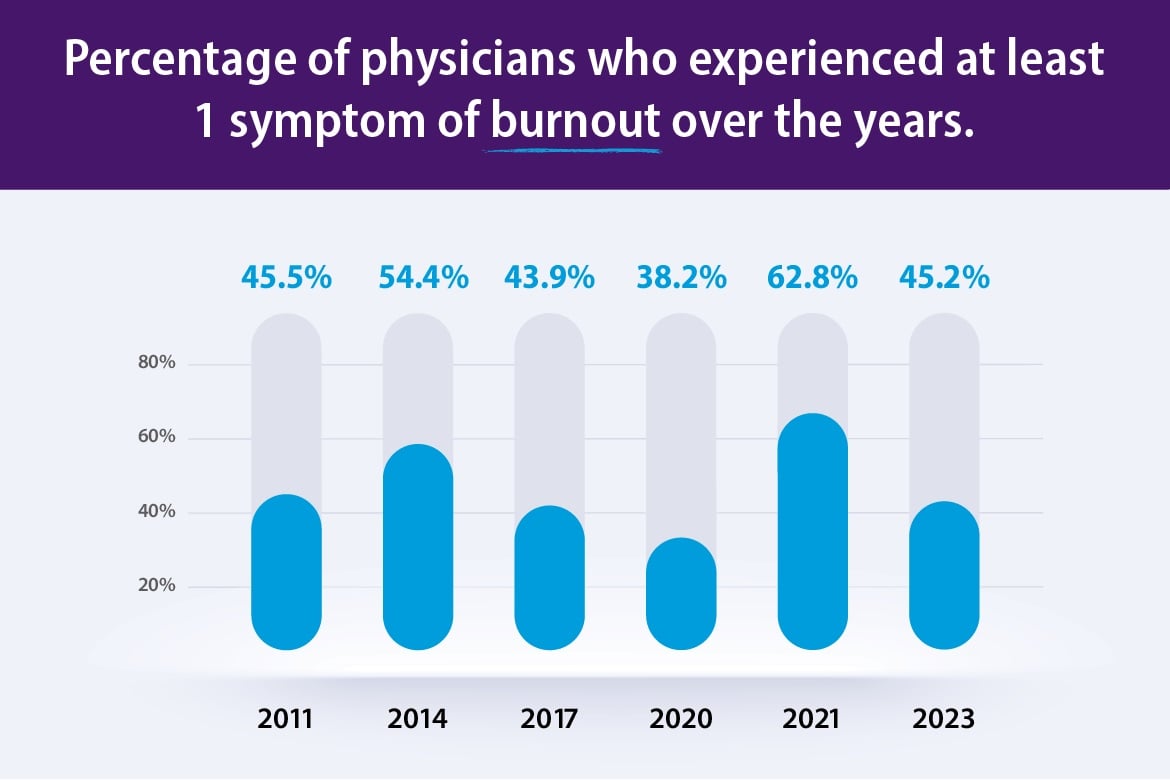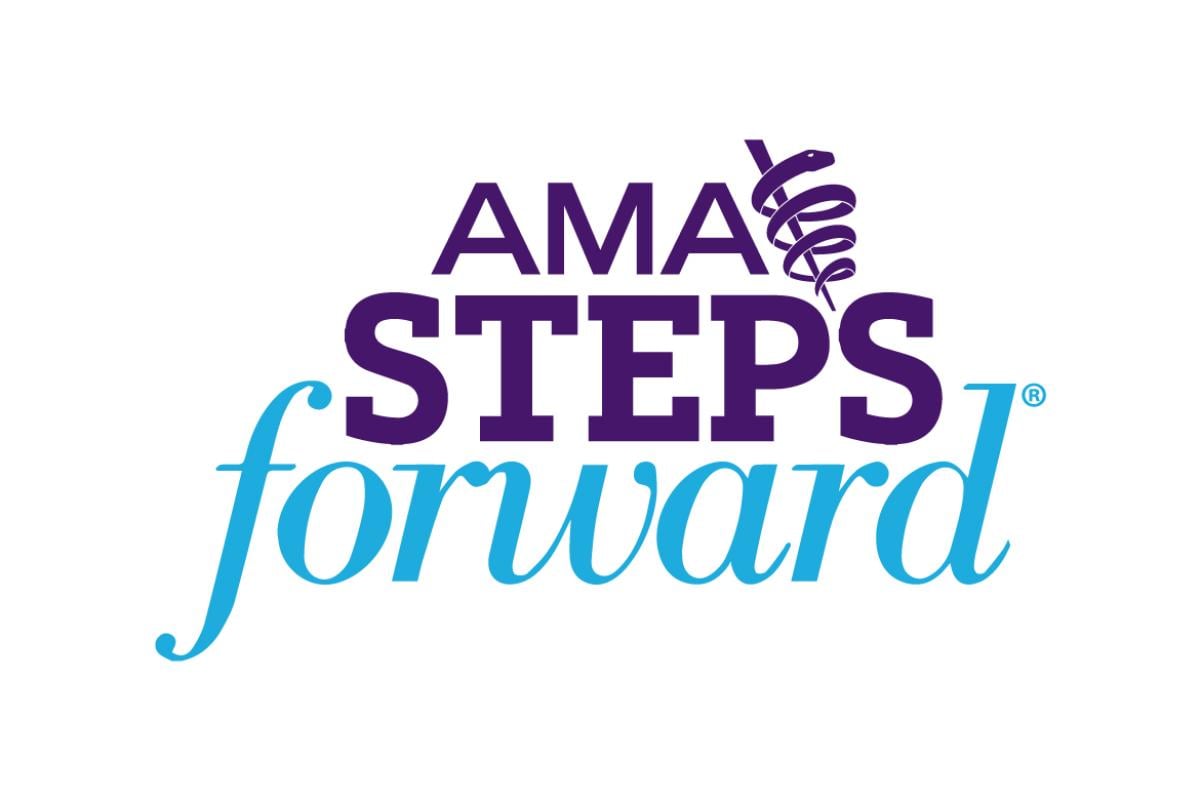Physician burnout rates continue to improve
The most recent study in the national burnout survey series found that 45.2% of physicians reported at least one symptom of burnout in 2023 compared to 62.8% in 2021, 38.2% in 2020, 43.9% in 2017, 54.4% in 2014 and 45.5% in 2011. Burnout among U.S. physicians has improved between 2021 and 2023 and is currently at levels similar to 2017. Despite this, U.S. physicians remain at higher risk for burnout relative to other U.S. workers.
Physician burnout trends
Since 2011, the AMA has led the national conversation on solving the physician burnout crisis and advocated for new solutions that acknowledge physicians need support, system reforms and burden reduction.
AMA advocacy efforts
- Established a national campaign to help states enact confidentiality laws that protect physicians seeking help for wellness, burnout and fatigue, and remove inappropriate, stigmatizing questions on physician licensure and renewal applications.
- Helped achieve—through efforts with partners—a record number of licensure boards and hospitals having updated their applications to support physician wellness.
- Advocated for and supported new laws and policies in over a dozen states that protect physicians who seek care for wellness and burnout.
- Built the AMA Organizational Biopsy®, an assessment tool that helps health care organizations holistically measure and take action to improve the well-being of their physicians and other health professionals.
- Shaped more than 40 policies and secured regulatory victories that have reduced documentation burdens.
Fighting system-level drivers of physician burnout
In collaboration with health care systems, the AMA’s efforts are aimed at delivering evidence-based solutions to increase professional well-being. By establishing workflows that support team-based care, health systems can boost productivity and reduce workforce stress.
"While burnout manifests in individuals, it originates in systems. Burnout is not the result of a deficiency in resiliency among physicians, rather it is due to the systems in which physicians work."
—Christine Sinsky, MD
Equipping physicians with resources
AMA develops resources that prioritize well-being and highlight workflow changes so physicians can focus on what matters most: patient care.













